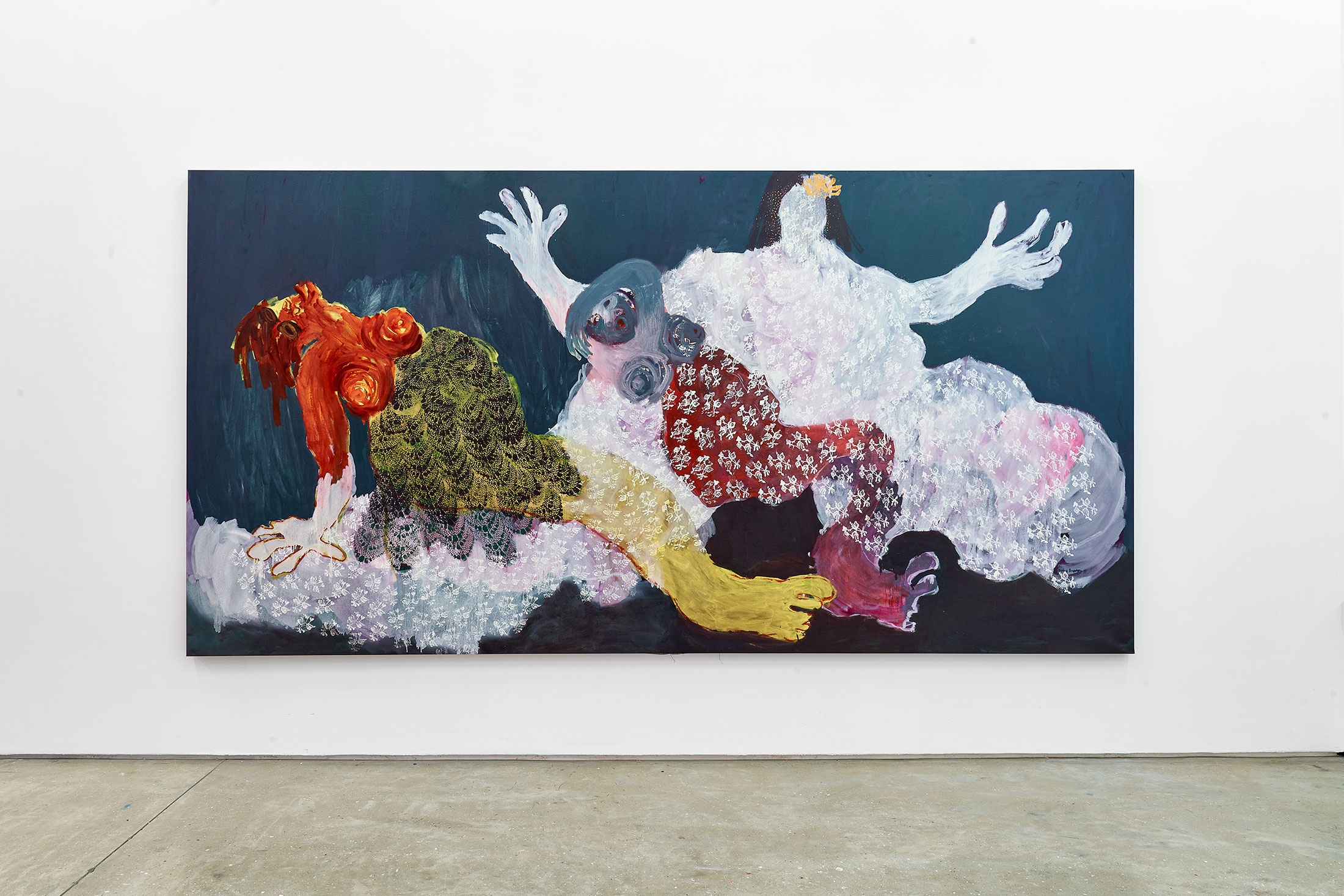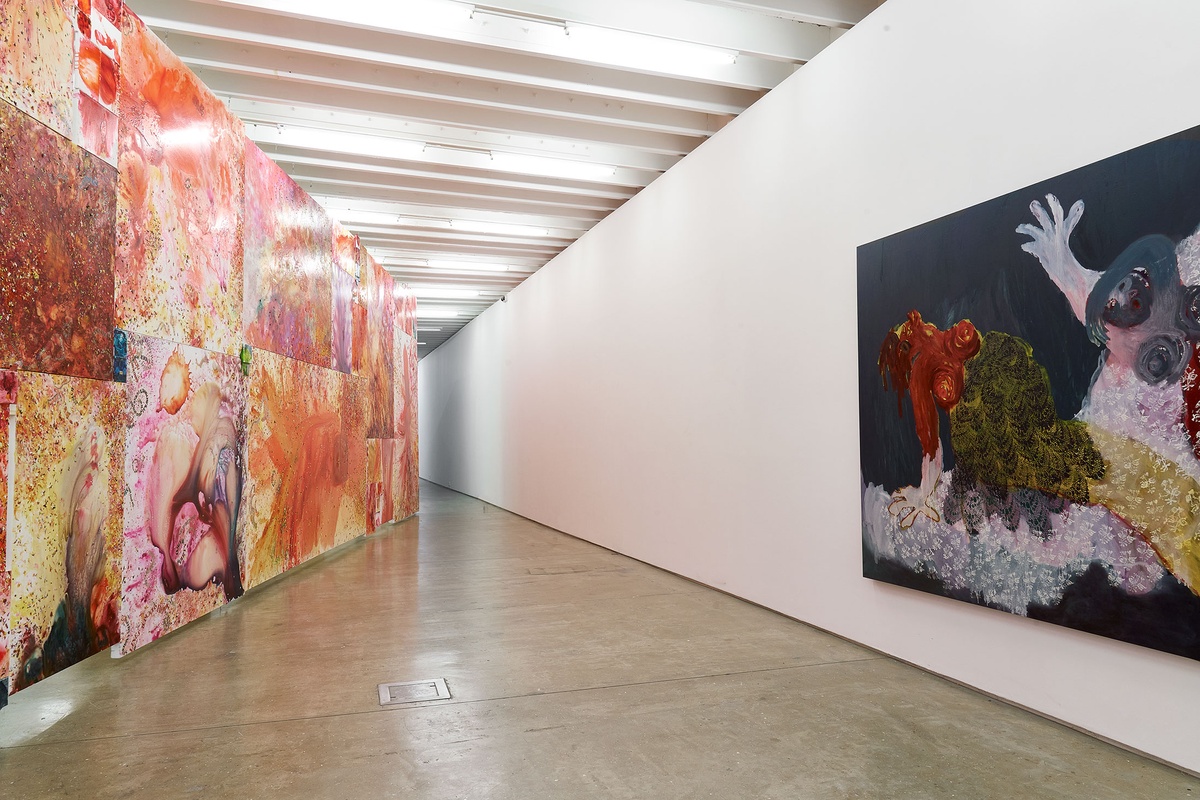Portia Zvavahera

In Portia Zvavahera’s Embraced and Protected in You, three figures are arranged in an ambiguous tableau. She recalls that, at this moment of painting, both she and her sister were pregnant. Engaged in prayer each night, they asked in their sleep for the opportunity to hold their children upon birth. The figure to the right – the ‘you’, perhaps, of the work’s title – conducts the scene, arms outstretched in a protective embrace. She evokes Zvavahera’s grandmother, who helped care for the artist while she was pregnant. All three figures in this composition are cloaked in a block-printed veil – a technique popular in Zimbabwean textile cultures. Symbolic of the union between the spiritual world and Earth, the present and future, dreams and reality, this veiling gestures to the artist’s syncretic faith. The large-scale nature of the work – its figures painted life-sized – is an invitation to the viewer to enter the dreamscape of the artist’s imagining. Rendered against shades of deep blue and purple, one defined red line distinguishes the woman on the left from the two ghostlier figures, whose boundaries and edges bleed and blur.
b.1985, Harare
Portia Zvavahera paints in the day to clarify the visions delivered to the artist through the night. “For me, the dreams are like future-telling, letting me know what to do next or what’s happening in the spirit world that I should be aware of.” Sleep informs her wakefulness, which, in turn, determines her sleep – her paintings a continuation of the dream-state and a method to process symbols and hidden meanings that may lie beneath the surface of comprehension. If there is a membrane between Zvavahera’s nights and days, it is one of state, rather than hierarchy. She affords no less importance to the matters of visitations, dreams, and shadowy messages, than to the day-to-day duties of parenting and painting. Zvavahera’s grandmother instilled in her the daily practice of recounting her dreams. Each morning, she would call the artist, then a child, to sit with her, and begin to interpret the night’s messages. To this day, the artist despairs of a dreamless night, for without these visitations, she is adrift, abandoned. And yet, for Zvavahera, painting is not without its physical and spiritual hardships; often, the potency of the dreamscape renders the artist sick and aching from wrestling with a dream’s traces. The path to healing is through the work. Prayer is a ritual she performs before bed. To pray offers her a modicum of protection against whatever forces she may encounter in the spirit world, much like the presence of veils and angels in her paintings cloak and protect her capacity to work, ensuring that she can continue to paint the telling no matter how challenging the content.

